Genus Cercyonis Rank Species | ||
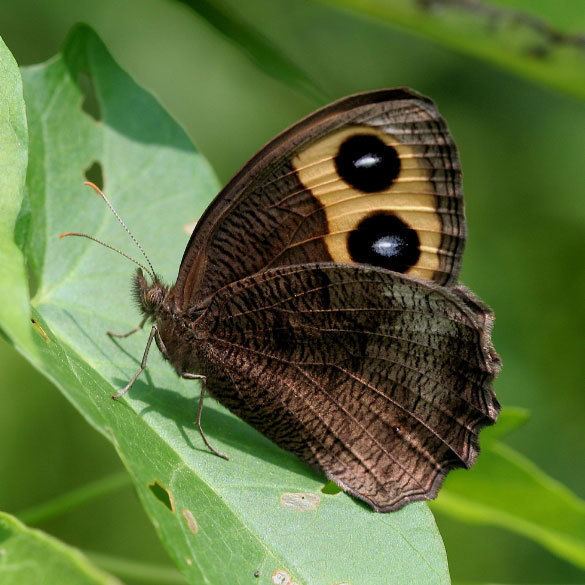 | ||
Similar Cercyonis, Megisto cymela, Eastern tailed‑blue, Colias philodice, Colias eurytheme | ||
The common wood-nymph (Cercyonis pegala) is a North American butterfly in the family Nymphalidae. It is also known as the wood-nymph, grayling, blue-eyed grayling, and the goggle eye.
Contents
- Common wood nymph butterfly
- Description
- Subspecies
- Similar species
- Range and distribution
- Habitat
- Flight period
- Life cycle
- Host plants
- References
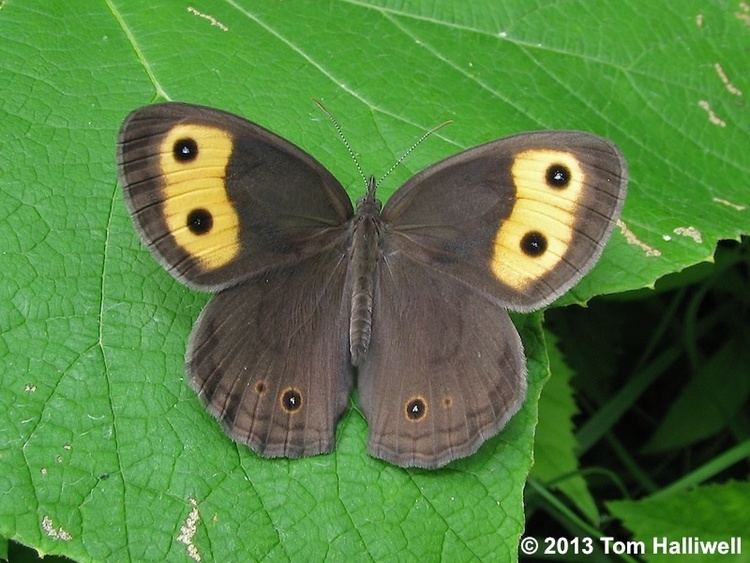
Common wood nymph butterfly
Description
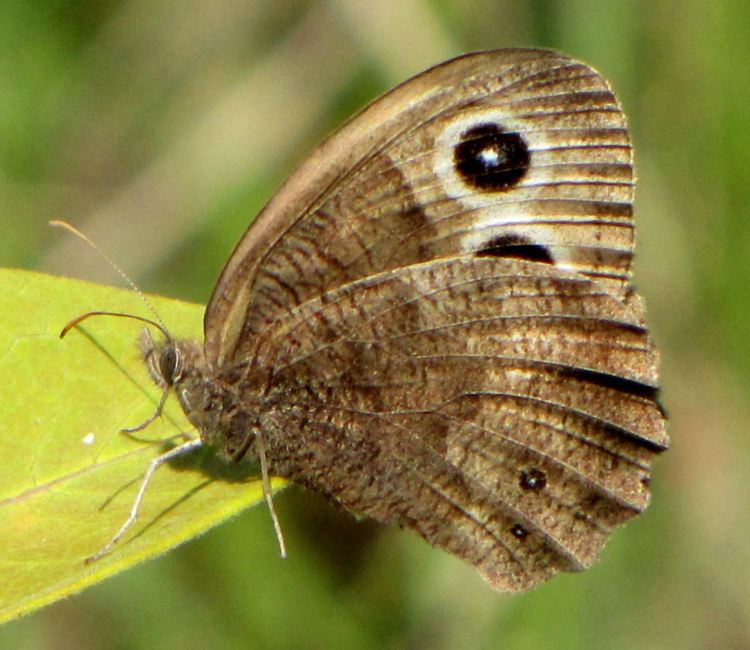
The common wood-nymph can vary greatly. All individuals are brown with two eyespots on each forewing – the lower one often being larger than the upper one. Some may have many, few, or no eyespots on the ventral surface of the hindwing. In the southeastern part of its range, it has a large yellow patch on both surfaces of the forewing. In the western part of its range, it may have a pale yellow patch or may be lacking one. Individuals in the Northeast also lack the yellow patch, i.e., C. p. nephele. In individuals with no yellow patch, there are two pale yellow eye rings that encircle both the forewing eyespots. The wingspan measures 5.3 to 7.3 cm (2.1 to 2.9 in).
Subspecies
The following subspecies are recognised:
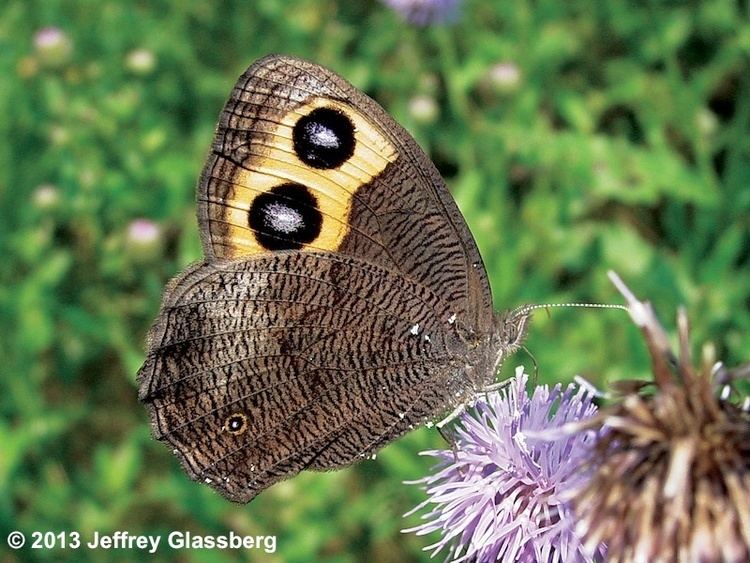
Similar species
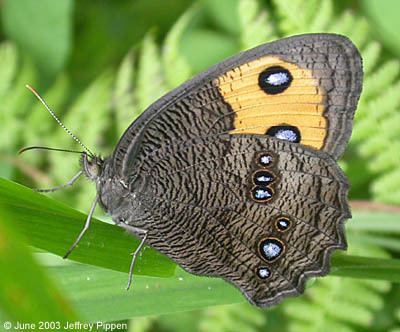
In the western part of the common wood-nymph's range, there are a few similar species. The Great Basin wood-nymph (Cercyonis sthenele) and the small wood-nymph (Cercyonis oetus) are smaller, and the lower forewing eyespot is smaller than the upper one. Mead's wood-nymph (Cercyonis meadii) has a bright red-orange area on the ventral forewing.
Range and distribution
The common wood-nymph ranges from Nova Scotia and Quebec west to northern British Columbia south to northern California southeast to Texas and east to northern Florida.
Habitat
The common wood-nymph is found in a variety of open habitats, such as open woodlands, woodland edges, fields, pastures, wet meadows, prairies, salt marshes, and savannas.
Flight period
The common wood-nymph is found from mid-May to early October in the eastern part of its range. It is found from late June to early July in California and Arizona. It has one brood per year throughout its entire range.
Life cycle
The female common wood-nymph is the active flight partner. The female lays her eggs on or near the host plant. The egg is pale yellow, later turning to a tan color with orange or pink blotches. The caterpillar makes no shelters or nests. It is green or yellowish-green with darker green stripes that run the length of the body. It has two short pinkish projections on the end of the abdomen. It has yellow spiracles and is covered in thin, white hairs. The caterpillar will reach a length of 5 cm (2 in). The common wood-nymph caterpillar is very similar to satyr caterpillars in the genera Hermeuptychia, Cyllopsis, and Neonympha. It can be separated by its larger size and habitat. The pale green chrysalis is striped in white or pale yellow. The first instar caterpillar hibernates.
Host plants
Here is a list of host plants used by the common wood-nymph:
